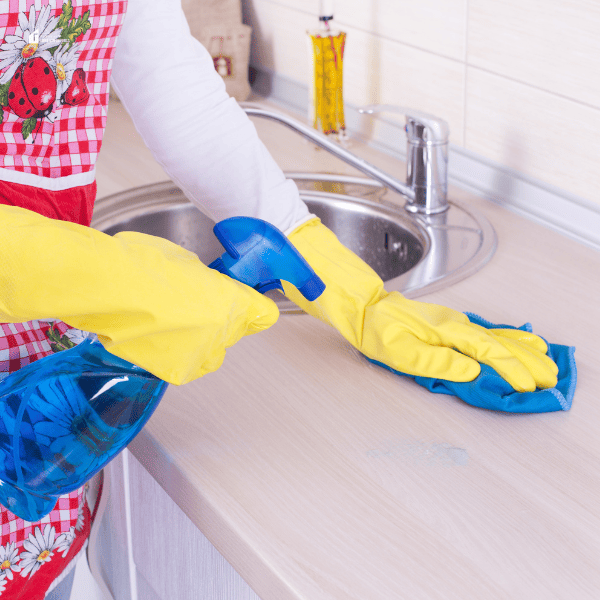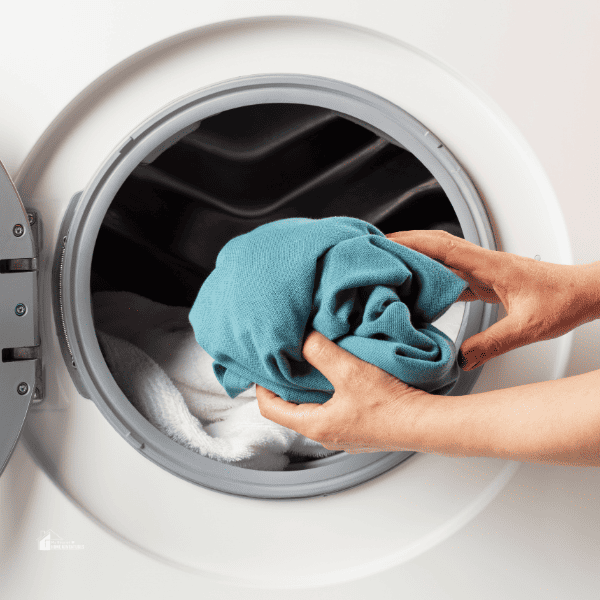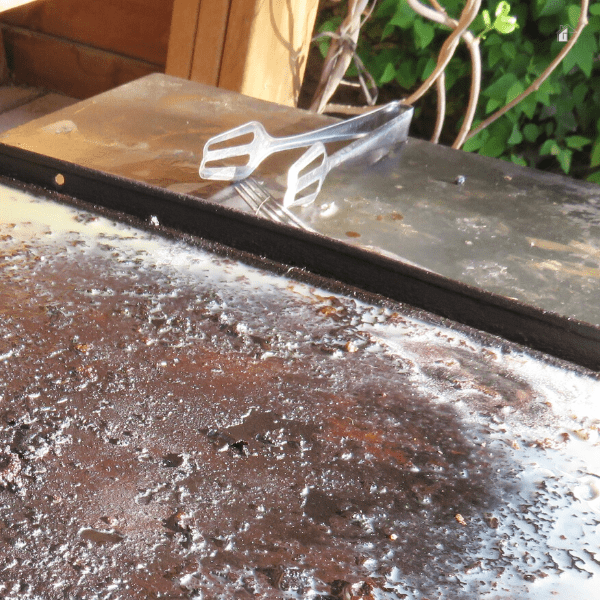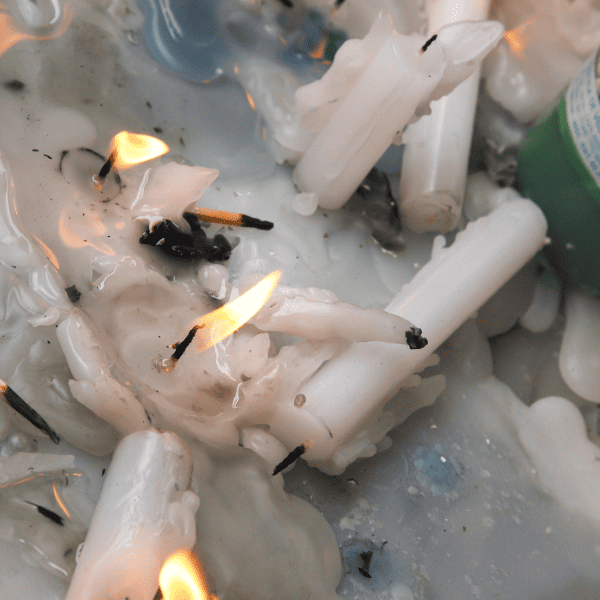How Do You Wash Curtains Without Ruining Them?
This post may contain affiliate links which might earn us money. Please read my Disclosure and Privacy policies hereCurtains can be a great way to add color and style to a room, but they can also be a pain to wash. If you don't know how to do it correctly, you could end up ruining them. So, what's the best way to go about washing curtains? Keep reading for some tips!

How do I wash curtains without ruining them?
You might need to take down your curtains for thorough cleaning after dusting if they are filthy, smelly, or otherwise unappealing.
If they can be machine washed, see the care label. Throw curtains in the washing machine on cold with a mild detergent and remove them before the spin cycle. To further sanitize them, allow them to air dry in the sun.
When it gets to the rinse cycle, add one cup of white vinegar after adding 1/2 cup of baking soda if they are stained.
Avoid rubbing or wringing the fabric when hand-washing; gently agitate it. So that wet surfaces don't touch, try to dry curtains across two parallel lines. The curtains shouldn't sit on wood since this could stain them on the hidden side, iron while moist along the vertical length.
You might enjoy these cleaning articles:
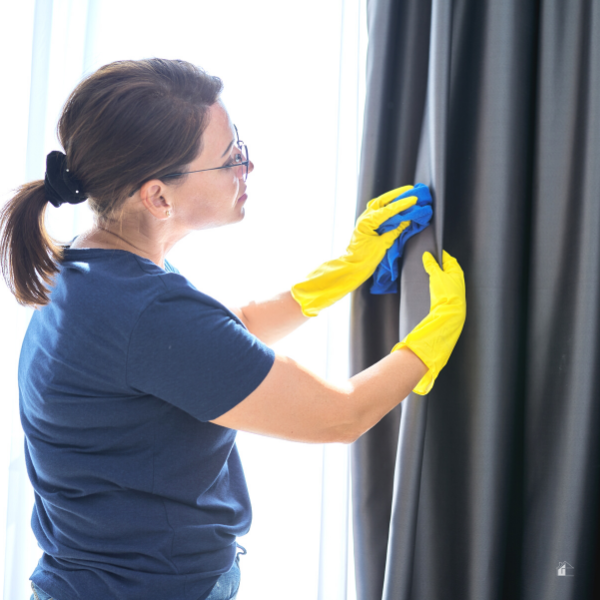
How to clean different curtain fabrics.
The following are common materials used to make drapes and curtains, each needing a distinct cleaning technique.
Silk
Silk is a luxurious fabric you can wash, although embroideries can shrink and tighten when cleaned, and the colors may bleed depending on the type of threads used. If the silk can be washed by hand, use warm or cold water and mild baby shampoo to clean the material. Avoid using a tumble dryer on silk curtains; roll them up in a towel to soak up any extra moisture before hanging them to dry naturally.
Cotton
If you have pure cotton curtains, be aware that this natural fabric tends to shrink unless they have been processed and preshrunk. In the case of non-preshrunk textiles, use cold water. In other cases, warm water for lighter colors and cold water for colors inclined to fade both works well. Avoid over-drying the fabric because this can cause shrinking as well.
Velvet
If you have unlined velvet curtains, you can wash them in the washing machine on the delicate cycle in cold water with half as much soap as usual. Perform a colorfastness test on the drapes first, nevertheless, before deciding to wash them in the washing machine. It is advisable to dry clean them if the color transfers after dabbing a tiny area with a damp sponge. Additionally, ensure that the just-washed curtains are spread out flat on a surface for air drying rather than being put in the dryer.
Lace
When lace is damp, it is more prone to wrinkling and snagging. To remove the dust and pet hair, shake the curtains outside. Next, you should clean each panel by immersing it in a solution of lukewarm water and a spoonful of detergent liquid, then gently spinning it around. To remove soap residue, drain the soapy water, wash the panel with cold water, and then hang the curtains to dry.
Linen
Linen can also be machine washed unless the cleaning instructions state that it must be professionally dry-cleaned. When cleaning, use cold water. Remember that linen will absorb more water than other fabrics, so adjust the water ratio accordingly. For optimum results, air dry the fabric and iron it from the back to better maintain the color.
How do you clean heavy curtains at home?
Take time to analyze the fabric of your curtains to determine the best cleaning method. Seasonal cleaning should come first, then the regular upkeep. Follow the maintenance cleaning instructions for your window treatments even if you're unsure what kind of curtains you have to avoid damaging them.
Steam cleaning is a fantastic option for curtains made of very hefty materials or particularly challenging to remove from the rail. One of the easiest ways to clean curtains is using a good steam cleaner equipped with an upholstery attachment.
- Always begin at the top of the curtain and work your way down.
- Hold the appliance slightly away from the curtain if you find that the material is getting wet.
- Always read the manufacturer's directions before using a steam cleaner, and keep in mind that steam can burn you, so make sure you're wearing the right protective gear.
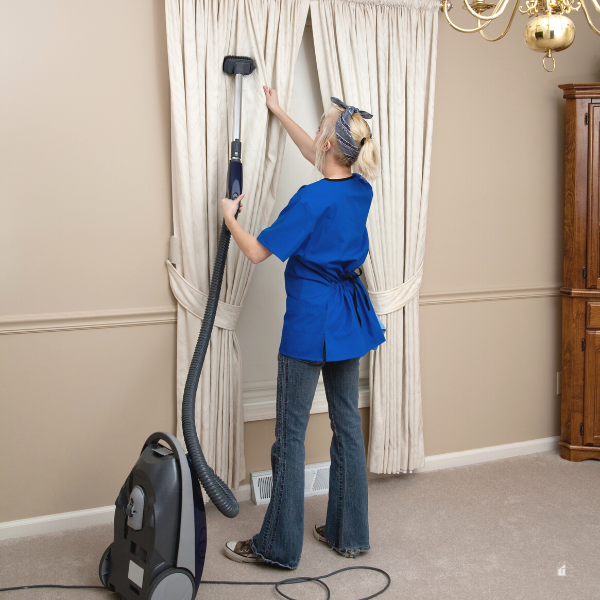
Should you wash your curtains?
Yes! Regular vacuuming is one thing, but you should aim to wash your curtains a few times a year for a good and completely clean. We like to do it when seasons change. Your home will determine how often you should clean your drapes.
You'll need to lint-roll/vacuum and wash yours more frequently if you have children who like to play hide & seek with sticky fingers behind your curtains or if your cat likes sitting on the windowsill and brushing its fur coat all up in your drapes.
How do you clean very large curtains?
First, remove all curtain weights and hooks, then adjust the heading tape. Let the hem down if the fabric is likely to shrink a little. To get rid of dust, shake.
Put the curtains in a tub of ice water. Then wash it carefully, taking into account the fabric type. When washing the curtains by hand, ensure the detergent is completely dissolved before submerging them. Never wring or rub.
Thoroughly rinse. Use a brief washing machine spin or squeeze out as much water as possible. Use a delicates setting on the washing machine if you must.
The curtains should be ironed when damp. Work lengthwise, on the wrong side, gently stretching the fabric to prevent puckering seams. So they fall to the proper length and hang the curtains when they are slightly damp.
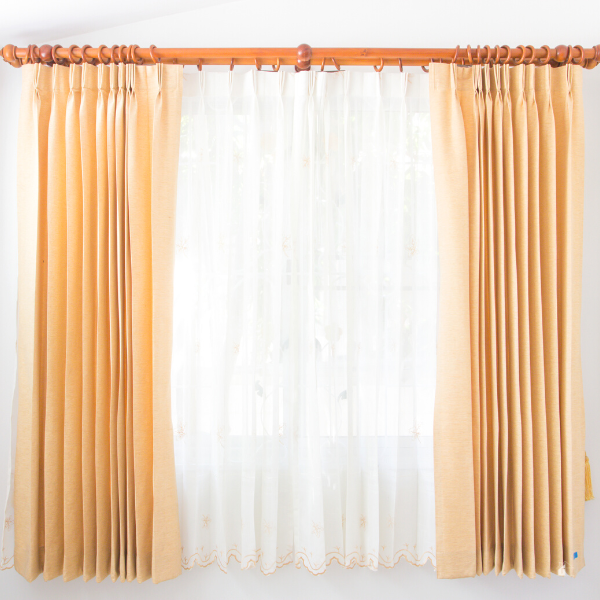
How do you make old curtains look new?
Here are some creative methods to freshen up worn-out curtains and give them a facelift!
Shibori dyeing
This Japanese dyeing method involves bunching or folding fabric before letting it soak in indigo color. Shibori dyeing can be used to add a strong pop of color to white or neutral curtains.
New curtain rod
Your curtains can benefit from new curtain rods. Choose a rustic bronze or champagne silver for a stylish, cost-effective upgrade.
Trim
Plain window treatments are transformed by adding a little trim to the drapes! Choose a ribbon, position it along the edge of the curtains, and use iron-on mending tape to secure it to the cloth.
Layer the curtains
It gives your window depth and texture while increasing seclusion and suppressing light. Utilize double curtain rod brackets to hang a combination of sheer and opaque panels.
Lengthen the curtains
Sew cloth at the bottom of your curtains to lengthen them. Aim for a “kiss” or “puddle” effect to accentuate your windows or give the impression that the space is larger.
Holdbacks and tiebacks
These are excellent accents for plain drapes and are relatively simple to replace. To alter the appearance of your window, pick from metal hardware, jeweled holdbacks, or rope tiebacks.
Paint the curtains
Get your paintbrush ready! To decorate your curtains and give your room a special touch, paint simple stripes, polka dots, or delicate flowers.
Can you clean curtains with a carpet cleaner?
Weekly curtain cleaning should be done using the lowest setting on your carpet cleaner attachment and a top-to-bottom motion. Pay close attention to the hem because debris tends to collect there. Use a lint roller to get rid of tenacious dust and pet hair.
Use a suitable attachment for curtains as directed by the manufacturer by reading the label on your carpet cleaner. To reach and clean the topmost portion of the curtain, think about utilizing a stool with the right height.
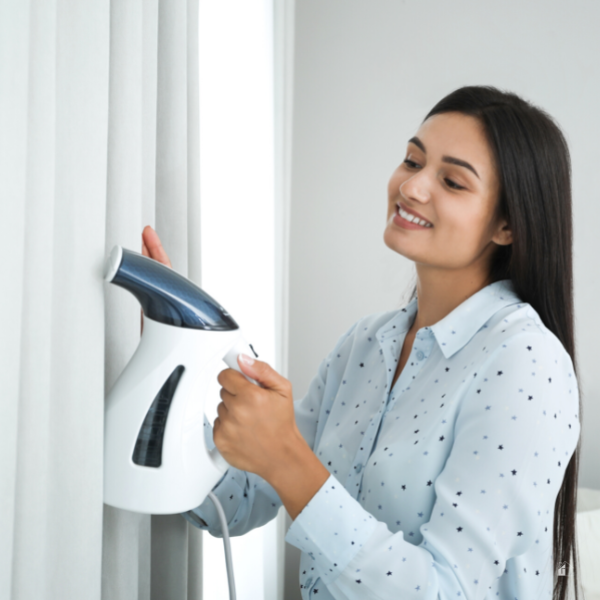
How do you wash curtains without a washing machine?
A hand wash is a safer option that will reduce the danger of this happening if your curtains are made of delicate materials, and you are concerned about damage or creasing them.
However, to avoid washing the curtains in portions and running the danger of missing a region, it is advisable to use the bath or a big sink.
Once more, take care not to let the cloth become water-logged and refer to the washing label for guidance on the appropriate water temperature.
The curtains should remain fresh and clean and be deodorized by a quality steam cleaner.
As directed by the manufacturer, fill the steam cleaner's water tank. Give the water some time to warm up, which generally takes several minutes. At the hose's end, screw on the jet nozzle.
Keep the nozzle six inches away from the curtains. Spray steam on the curtains, working your way from top to bottom. Change the nozzle's distance from the curtains from 6 to 2 inches over seam lines. Remove the jet nozzle and leave it aside once you have sprayed the draperies' entire front surface.
At the hose's end, screw the cloth or drape tool. Keep the hose upright to allow contaminated condensate to flow back through it and into the machine. To clean the top of the draperies, lightly touch the cleaning tool at the hose's end. Then, slowly lower the device from top to bottom of the fabric panel.
Once the front surface of all the curtains has been covered, keep steaming them. If possible, repeat the procedure on the drapes' reverse side using the fabric or drape tool. Let the curtains air dry.
How do you steam curtains without a steamer?
You will produce steam by running hot water as the drapes are hung over a shower rod. First, remove the curtains from the curtain rod and hang them over the bathroom shower rod. After that, put on the hot water and shut any windows and the bathroom door.
Over the following five to ten minutes, allow the bathroom to steam up before turning the water off. Then, for about 30 minutes, let the bathroom curtains hang. Rehang them to dry on the curtain rod after that.
Can I steam my curtains with an iron?
You can use an iron that can generate steam while being held vertically and has a minimum power of 1400 watts.
Steam the curtain panel starting at the top and working your way down. Again, keep the iron away from the fabric's surface. While holding the bottom hem taut is helpful, it is not necessary to have a helper.
Permit steam to permeate the iron's imprint—steam once again as you move the iron down the panel lengthwise. Continually steam down the panel's length.
Repeat the process by moving back up to the panel's top and to the right of the first steamed part.
Before moving the curtains, give them time to cool and dry. Then, if further steaming is required, do so.

